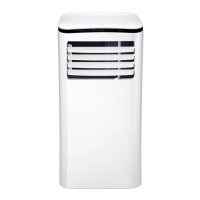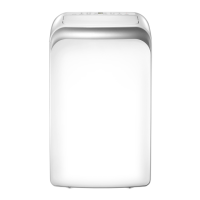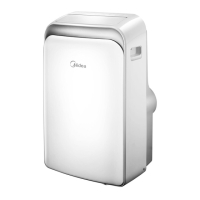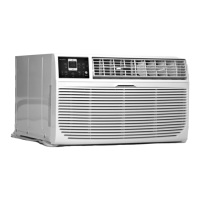What to do if water in the bottom tray of my Midea Air Conditioner may form mold?
- RrogersleeJul 27, 2025
To prevent mold from forming, keep your Midea Air Conditioner running on FAN mode for half a day in a warm room to dry the appliance inside.

What to do if water in the bottom tray of my Midea Air Conditioner may form mold?
To prevent mold from forming, keep your Midea Air Conditioner running on FAN mode for half a day in a warm room to dry the appliance inside.
How to fix inferior fan operation in Midea PH?
Inferior fan operation in your Midea Air Conditioner may be caused by a dirty air filter. Clean the air filter at least once every two weeks.
| HSPF Rating | Up to 10 |
|---|---|
| Refrigerant | R410A |
| Indoor Unit Weight | Varies by model |
| Outdoor Unit Weight | Varies by model |
| Cooling Capacity (BTU/h) | 9000 - 36000 |
| Voltage (V) | 208-230V |
| Features | Quiet operation |
| Heating Capacity | 9000 - 36000 BTU/h |
| Indoor Unit Dimensions (W x H x D) | Varies by model |
| Outdoor Unit Dimensions (W x H x D) | Varies by model |
Instructions to prevent injury, damage, and ensure safe operation of the appliance.
Crucial warnings regarding installation and operation to prevent hazards like fire or electric shock.
Important advisories for installation and operation to prevent damage and ensure proper function.
Lists the operational features and modes of the air conditioner.
Details the buttons, indicators, and error codes on the control panel.
Defines key terms like temperatures (TC, TA, TS, TE) used in electronic functions.
Specifies the required input voltage range for the unit.
Describes built-in protections like compressor delay and sensor error handling.
Outlines the operation of the fan-only mode.
Details fan speed options and compressor operation logic in cooling mode.
Explains how the unit operates in drying mode based on temperature.
Summarizes the timer and sleep functions for user convenience.
Provides requirements for unit placement and clearances for proper installation.
Important notes on unplugging before servicing and cleaning agents to avoid.
Guides on testing compressor wiring and ground for defects.
Lists necessary equipment and capabilities for refrigerant system repairs.
Describes the fan motor type and its overload protection.
Explains capacitor function and provides testing procedures for run capacitors.
Troubleshooting steps for when the unit fails to start when the button is pressed.
Diagnosing and resolving issues where the unit's cooling performance is poor.
Identifying causes and solutions for excessive noise and vibration from the unit.
Understanding the cause of gurgling sounds and if it's a normal operation.
Details causations and solutions for temperature sensor malfunctions.
Explains errors related to communication between control boards and their fixes.
Describes issues with the display board's EEPROM and necessary actions.
Identifies and resolves refrigerant leakage detection errors.
Explains the water full protection error and how to resolve it.











